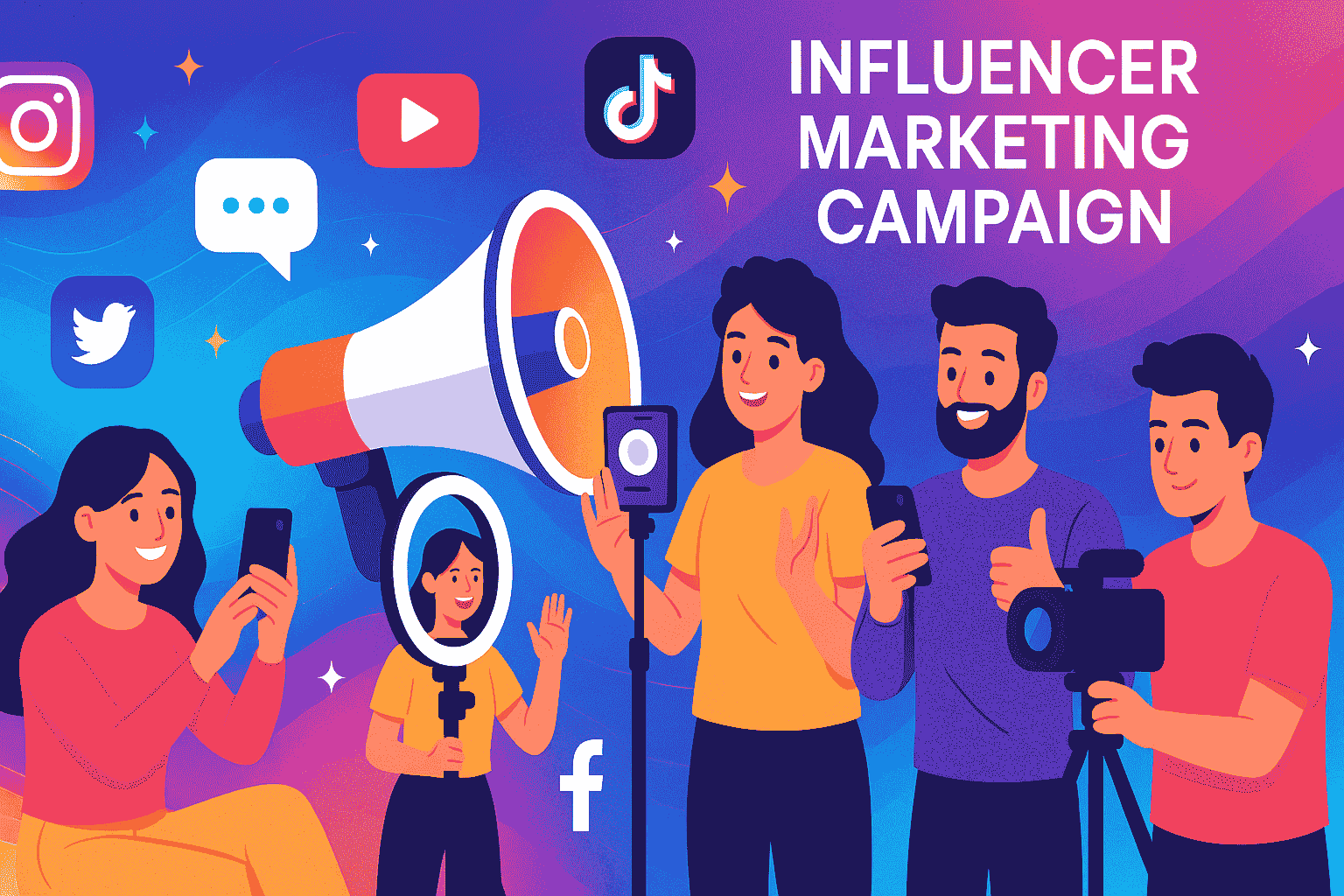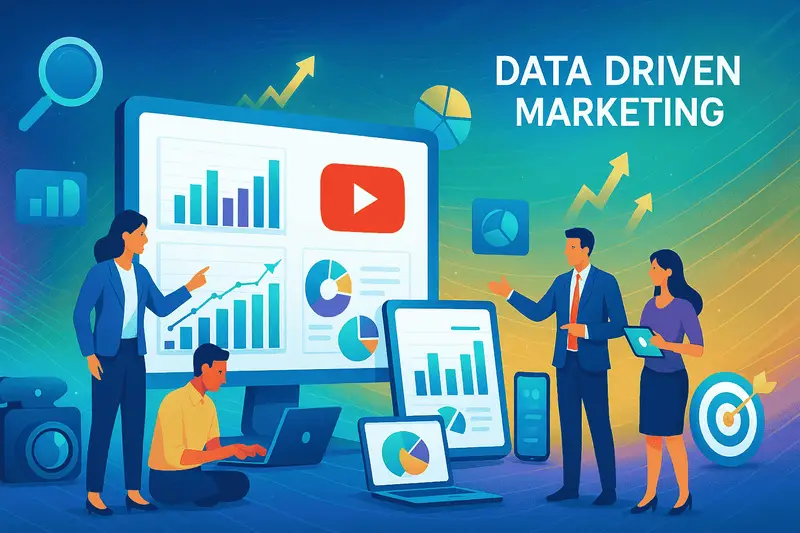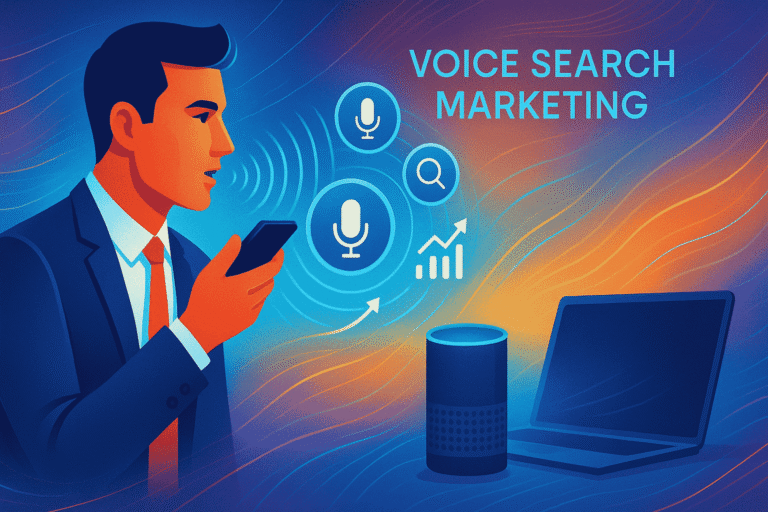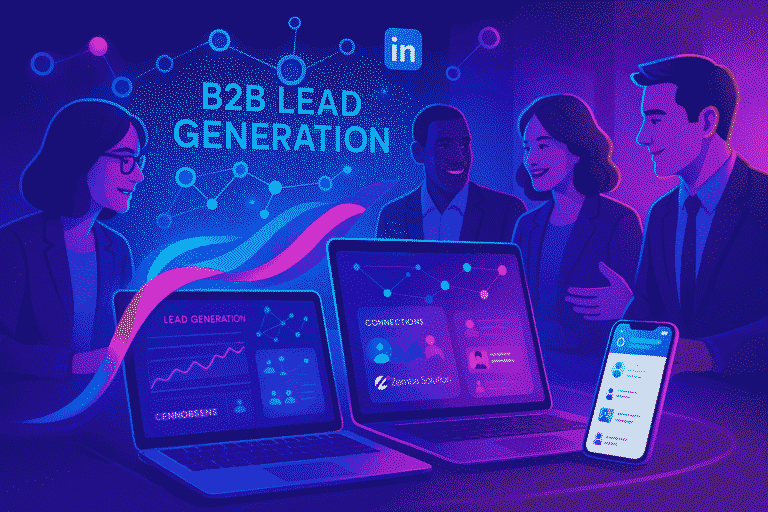Data driven marketing is no longer a buzzword—it’s the foundation of every successful business strategy in 2025. In a world where every click, view, and purchase generates data, brands that harness analytics can outsmart competitors, delight customers, and drive real growth.
This ultimate guide will show you how to use data driven marketing to grow your business, with actionable strategies, real-world examples, and the latest best practices for turning analytics into ROI.
What is Data Driven Marketing?
Data driven marketing is the practice of using data and analytics to inform every aspect of your marketing strategy—from audience targeting and content creation to campaign optimization and ROI measurement. Instead of relying on gut feeling or guesswork, data driven marketing empowers you to make smarter, faster, and more profitable decisions.
Key elements of data driven marketing:
- Collecting and analyzing customer data
- Using insights to personalize experiences
- Optimizing campaigns based on real-time results
- Measuring and attributing ROI
Why Data Driven Marketing Matters in 2025
The digital landscape is more competitive than ever. Here’s why data driven marketing is essential:
- Customer expectations: People expect personalized, relevant experiences.
- Competition: Brands that use data can outmaneuver those that don’t.
- Efficiency: Data driven marketing eliminates wasted spend and maximizes ROI.
- Agility: Real-time analytics let you pivot quickly and capitalize on trends.
- Growth: Data driven decisions lead to better targeting, higher conversions, and faster scaling.
According to Forbes, companies that adopt data driven marketing are six times more likely to be profitable year-over-year.
7 Steps to Build a Data Driven Marketing Strategy
1. Set Clear Goals and KPIs
Start with your business objectives. What do you want to achieve?
- Increase website traffic
- Generate more leads
- Boost sales or conversions
- Improve customer retention
KPIs to track:
- Website visits
- Conversion rate
- Cost per acquisition (CPA)
- Customer lifetime value (CLV)
- Return on ad spend (ROAS)
Action Step:
Write down your top 2–3 goals and how you’ll measure success.
2. Identify and Collect the Right Data
Not all data is created equal. Focus on data that helps you achieve your goals:
- Demographics (age, gender, location)
- Behavior (pages visited, time on site, actions taken)
- Source (organic, paid, social, referral)
- Engagement (opens, clicks, shares)
- Purchase history
Action Step:
Audit your current data sources and identify gaps.
3. Integrate Your Data Sources
Data driven marketing works best when you have a unified view of your customer. Integrate data from:
- Website analytics (Google Analytics, Adobe Analytics)
- CRM (HubSpot, Salesforce)
- Email marketing (Mailchimp, Klaviyo)
- Social media (Facebook Insights, LinkedIn Analytics)
- E-commerce platforms (Shopify, WooCommerce)
Action Step:
Use a customer data platform (CDP) or marketing automation tool to centralize your data.
4. Analyze and Segment Your Audience
Use analytics to identify patterns and segment your audience:
- By demographics (age, gender, location)
- By behavior (new vs. returning, high-value vs. low-value)
- By engagement (active vs. inactive)
- By lifecycle stage (lead, customer, repeat buyer)
Action Step:
Create audience segments and tailor your messaging for each group.
5. Personalize Your Marketing
Personalization is the heart of data driven marketing. Use data to:
- Send targeted emails based on behavior or interests
- Show personalized product recommendations
- Deliver dynamic website content
- Retarget users with relevant ads
Action Step:
Set up automated workflows to deliver personalized experiences at scale.
6. Test, Optimize, and Iterate
Data driven marketing is all about continuous improvement. Use A/B testing and multivariate testing to:
- Optimize landing pages and CTAs
- Test subject lines and email content
- Experiment with ad creatives and audiences
Action Step:
Run at least one A/B test per month and use the results to refine your strategy.
7. Measure, Attribute, and Report ROI
Track every campaign and channel to see what’s working. Use attribution models to understand the customer journey and allocate budget effectively.
Action Step:
Create a dashboard to monitor your KPIs and share results with your team.
Types of Data in Data Driven Marketing
1. First-Party Data
Data you collect directly from your audience (website analytics, CRM, email signups). Most valuable and privacy-compliant.
2. Second-Party Data
Data shared with you by partners (e.g., co-marketing campaigns, data exchanges).
3. Third-Party Data
Data purchased from external providers (demographic, behavioral, intent data). Use with caution due to privacy concerns.
4. Zero-Party Data
Data that customers intentionally share with you (preferences, survey responses, quiz results).
Data Collection: Tools and Best Practices
Top Data Collection Tools
- Google Analytics 4: Website and app analytics
- Hotjar/FullStory: Heatmaps and user behavior tracking
- HubSpot CRM: Customer relationship management
- Mailchimp/Klaviyo: Email engagement data
- Facebook Pixel: Ad and conversion tracking
- Segment: Data integration and management
Best Practices
- Be transparent about data collection (privacy policy, cookie consent)
- Collect only what you need
- Secure and encrypt sensitive data
- Regularly clean and update your database

Turning Data into Insights: Analytics for Marketers
Raw data is useless without analysis. Here’s how to turn data into actionable insights:
1. Use Dashboards
Visualize your KPIs in real time with dashboards (Google Data Studio, Tableau, Power BI).
2. Identify Trends
Look for patterns in traffic, conversions, and engagement. What’s working? What’s not?
3. Drill Down
Segment data by channel, audience, or campaign to find opportunities for optimization.
4. Predictive Analytics
Use machine learning tools to forecast trends, identify at-risk customers, and predict future sales.
5. Share Insights
Regularly report findings to your team and stakeholders. Use data to drive decision-making.
Personalization and Customer Experience
Personalization is the secret weapon of data driven marketing. Here’s how to use data to create unforgettable customer experiences:
1. Dynamic Website Content
Show different content, offers, or products based on user behavior, location, or past purchases.
2. Email Personalization
Send targeted emails with personalized subject lines, product recommendations, and content.
3. Retargeting
Use data to show relevant ads to users who visited your site but didn’t convert.
4. Chatbots and Conversational Marketing
Deploy chatbots that use data to answer questions, recommend products, and guide users through the funnel.
5. Customer Journey Mapping
Use analytics to map the customer journey and identify touchpoints for personalization.
Optimizing Campaigns with Data Driven Marketing
1. A/B and Multivariate Testing
Test different versions of ads, emails, and landing pages to see what performs best.
2. Real-Time Optimization
Use live data to adjust bids, budgets, and creative on the fly.
3. Attribution Modeling
Understand which channels and touchpoints drive conversions, and allocate budget accordingly.
4. Funnel Analysis
Identify where users drop off in your funnel and optimize those stages.
5. Cross-Channel Optimization
Coordinate campaigns across email, social, search, and display for maximum impact.
Measuring ROI and Marketing Attribution
1. Set Up Conversion Tracking
Use tools like Google Analytics, Facebook Pixel, and CRM integrations to track conversions.
2. Choose an Attribution Model
- Last-click: Credit goes to the last touchpoint.
- First-click: Credit goes to the first touchpoint.
- Linear: Credit is shared equally across all touchpoints.
- Time decay: More credit to recent touchpoints.
- Data-driven: Uses machine learning to assign credit.
3. Calculate ROI
ROI = (Revenue from marketing – Cost of marketing) / Cost of marketing
4. Report and Refine
Share results with your team and use insights to improve future campaigns.
Data Driven Marketing for Different Channels
1. Email Marketing
- Segment lists by behavior and preferences
- Personalize subject lines and content
- Test send times and frequency
2. Social Media
- Analyze engagement by post type, time, and audience
- Use social listening tools to track brand sentiment
- Optimize ad targeting with lookalike audiences
3. Paid Search and Display
- Use conversion data to refine keywords and bids
- Test ad copy and landing pages
- Retarget users who didn’t convert
4. Content Marketing
- Track which topics and formats drive the most traffic and leads
- Use heatmaps to see how users interact with your content
- Update and repurpose top-performing content
5. SEO
- Analyze keyword rankings and organic traffic
- Identify content gaps and opportunities
- Monitor backlinks and technical SEO issues
Common Mistakes in Data Driven Marketing
- Collecting too much data without a plan
- Ignoring data privacy and compliance
- Not integrating data sources
- Focusing on vanity metrics instead of business outcomes
- Failing to act on insights
- Over-personalizing and creeping out customers
- Not testing and optimizing regularly
- Relying solely on third-party data
- Neglecting the human element in marketing
- Not training your team on data literacy
Case Studies: Data Driven Marketing Success Stories
1. Netflix
Netflix uses data driven marketing to personalize recommendations, optimize content, and predict viewer trends. Their data-driven approach has helped them become the world’s leading streaming platform.
2. Amazon
Amazon’s recommendation engine is a masterclass in data driven marketing. By analyzing purchase history, browsing behavior, and preferences, Amazon delivers personalized product suggestions that drive billions in sales.
3. Coca-Cola
Coca-Cola uses data to optimize ad spend, test new products, and personalize marketing campaigns for different regions and audiences.
4. Spotify
Spotify’s “Wrapped” campaign uses listener data to create personalized year-in-review playlists, driving massive engagement and social sharing.
5. Airbnb
Airbnb leverages data to optimize pricing, personalize search results, and improve the guest experience.

Advanced Data Driven Marketing Trends for 2025
- AI and Machine Learning: Predictive analytics, automated optimization, and smarter segmentation.
- Zero-Party Data: Collecting data users willingly share for better personalization.
- Real-Time Personalization: Dynamic content and offers based on live user behavior.
- Voice and Visual Search: Optimizing for new ways people search and interact.
- Privacy-First Marketing: Balancing personalization with data protection and transparency.
- Cross-Device Tracking: Understanding the full customer journey across devices.
- Data Democratization: Making data accessible and actionable for all teams.
Top Tools for Data Driven Marketing
- Google Analytics 4
- HubSpot Marketing Hub
- Salesforce Marketing Cloud
- Tableau/Power BI
- Hotjar/FullStory
- Segment
- Klaviyo
- Mailchimp
- Hootsuite/Buffer
- Ahrefs/SEMrush
Data Driven Marketing: Building a Data-Driven Culture
A successful data driven marketing strategy isn’t just about tools and tactics—it’s about building a culture that values data at every level of your organization.
1. Train Your Team
Invest in data literacy training for your marketing, sales, and customer service teams. Make sure everyone understands how to interpret data and use it to make decisions.
2. Break Down Silos
Encourage collaboration between departments. Share data and insights across teams to create a unified view of the customer.
3. Make Data Accessible
Use dashboards and visualization tools to make data easy to understand and act on. Avoid hiding valuable insights in spreadsheets or reports that no one reads.
4. Encourage Experimentation
Foster a culture of testing and learning. Reward teams for running experiments, sharing results, and iterating based on data.
5. Align Data with Business Goals
Ensure that your data driven marketing efforts are always tied to your company’s broader objectives. Don’t collect data for data’s sake—use it to drive real business outcomes.
Data Driven Marketing: The Human Element
While data is powerful, it’s important not to lose sight of the human element in marketing. Use data to inform your strategy, but always keep your customers’ needs, emotions, and experiences at the center.
- Empathy: Use data to understand your customers’ pain points and motivations.
- Storytelling: Combine data with compelling stories to create memorable campaigns.
- Trust: Be transparent about how you use data and respect your customers’ privacy.
Data Driven Marketing for Small Businesses
You don’t need a big budget or a data science team to benefit from data driven marketing. Here’s how small businesses can get started:
- Use free tools like Google Analytics and Facebook Insights.
- Focus on a few key metrics that matter most to your business.
- Start with simple segmentation and personalization.
- Test different marketing tactics and double down on what works.
- Learn from your data and keep improving.
Data Driven Marketing: The Future
The future of data driven marketing is bright. As technology evolves, marketers will have even more powerful tools to understand, engage, and delight customers.
- AI will automate more tasks, freeing up time for creativity and strategy.
- Personalization will become even more precise, with real-time data driving every interaction.
- Privacy and ethics will be at the forefront, with brands building trust through transparency and responsible data use.
Voice search, visual search, and IoT devices will generate new types of data and new opportunities for marketers. The brands that succeed will be those that can adapt quickly, experiment often, and always put the customer first.
Data Driven Marketing: Integrating Offline and Online Data
For many businesses, the customer journey spans both online and offline touchpoints. Integrating data from all sources gives you a complete picture of your customer and helps you deliver a seamless experience.
1. Collect Offline Data
- In-store purchases
- Event attendance
- Phone calls and customer service interactions
- Direct mail responses
2. Link Offline and Online Data
Use unique identifiers (like email addresses or loyalty cards) to connect offline and online data. This allows you to track the full customer journey and attribute sales to the right channels.
3. Use Data to Personalize Offline Experiences
- Send personalized offers based on online behavior.
- Use purchase history to recommend products in-store.
- Follow up with customers after events or appointments.

Data Driven Marketing: Overcoming Common Challenges
1. Data Quality
Bad data leads to bad decisions. Regularly clean your database, remove duplicates, and validate new entries.
2. Data Privacy and Compliance
Stay up to date with regulations like GDPR and CCPA. Be transparent about data collection and give users control over their information.
3. Data Overload
Don’t try to track everything. Focus on the metrics that matter most to your business goals.
4. Skills Gap
Invest in training or hire experts to help you make the most of your data.
Data Driven Marketing: Real-World Examples
1. Starbucks
Starbucks uses data driven marketing to personalize offers and rewards for each customer. Their mobile app tracks purchase history, preferences, and location to deliver targeted promotions and drive loyalty.
2. Nike
Nike’s data driven marketing strategy includes analyzing customer feedback, social media trends, and purchase data to design new products and create personalized marketing campaigns.
3. Sephora
Sephora uses data from its Beauty Insider program to recommend products, personalize emails, and create a seamless online and in-store experience.
Data Driven Marketing: Your Action Plan
- Set clear goals and KPIs.
- Audit your data sources and integrate them.
- Segment your audience and personalize your marketing.
- Test, optimize, and iterate based on data.
- Measure ROI and refine your strategy.
- Build a data-driven culture in your organization.
- Stay updated on trends and tools.
Final Thoughts
Data driven marketing is the future of business growth. By collecting, analyzing, and acting on data, you can create personalized experiences, optimize campaigns, and drive real ROI. The brands that succeed in 2025 and beyond will be those that embrace data, experiment boldly, and never lose sight of the human element.
Ready to grow your business? Start implementing these data driven marketing strategies today and watch your results soar!
Conclusion: Your Next Steps for Data Driven Marketing Success
Data driven marketing is the future of business growth. By collecting, analyzing, and acting on data, you can create personalized experiences, optimize campaigns, and drive real ROI.
Action Steps:
- Set clear goals and KPIs.
- Audit and integrate your data sources.
- Segment your audience and personalize your marketing.
- Test, optimize, and iterate based on data.
- Measure ROI and refine your strategy.
- Stay updated on data driven marketing trends and tools.
Ready to grow your business? Start implementing these data driven marketing strategies today and watch your results soar in 2025 and beyond!
Frequently Asked Questions
Q: Is data driven marketing only for big companies?
A: No! Small businesses can use data driven marketing to compete and grow, often with free or affordable tools.
Q: How do I get started with data driven marketing?
A: Start by setting goals, collecting data, and using analytics to inform your decisions.
Q: What’s the biggest mistake in data driven marketing?
A: Collecting data without a plan or failing to act on insights.
Q: How do I ensure data privacy?
A: Be transparent, collect only what you need, and comply with regulations like GDPR.
Further Reading
- Forbes: The Importance of Data Driven Marketing
- HubSpot: Data Driven Marketing Guide
- Salesforce: Data Driven Marketing Trends
- Neil Patel: Data Driven Marketing Tips
Need Help Elevating Your Digital Brand?
Ready to implement a future-ready brand strategy? Our expert team specializes in crafting compelling online identities that convert browsers into believers.
👉 Contact Us Today for a free 15-minute consultation.





